So you love coffee. You like it white and creamy. You’ve tried cappuccinos, but you’re not keen on the foam mustache. You, my friend, are a dedicated latte lover.
But then along comes this other coffee. The flat white. You’ve heard people rave about it, but you’re not sure what it is.
Should you abandon your latte and give it a try?
Before you decide on flat white vs latte, take a look at our explanation of the differences between the two. Covering everything from strength to flavor, we’ll give you the information you need to make your choice.
Table of Contents
Flat White Vs Latte – The origin stories
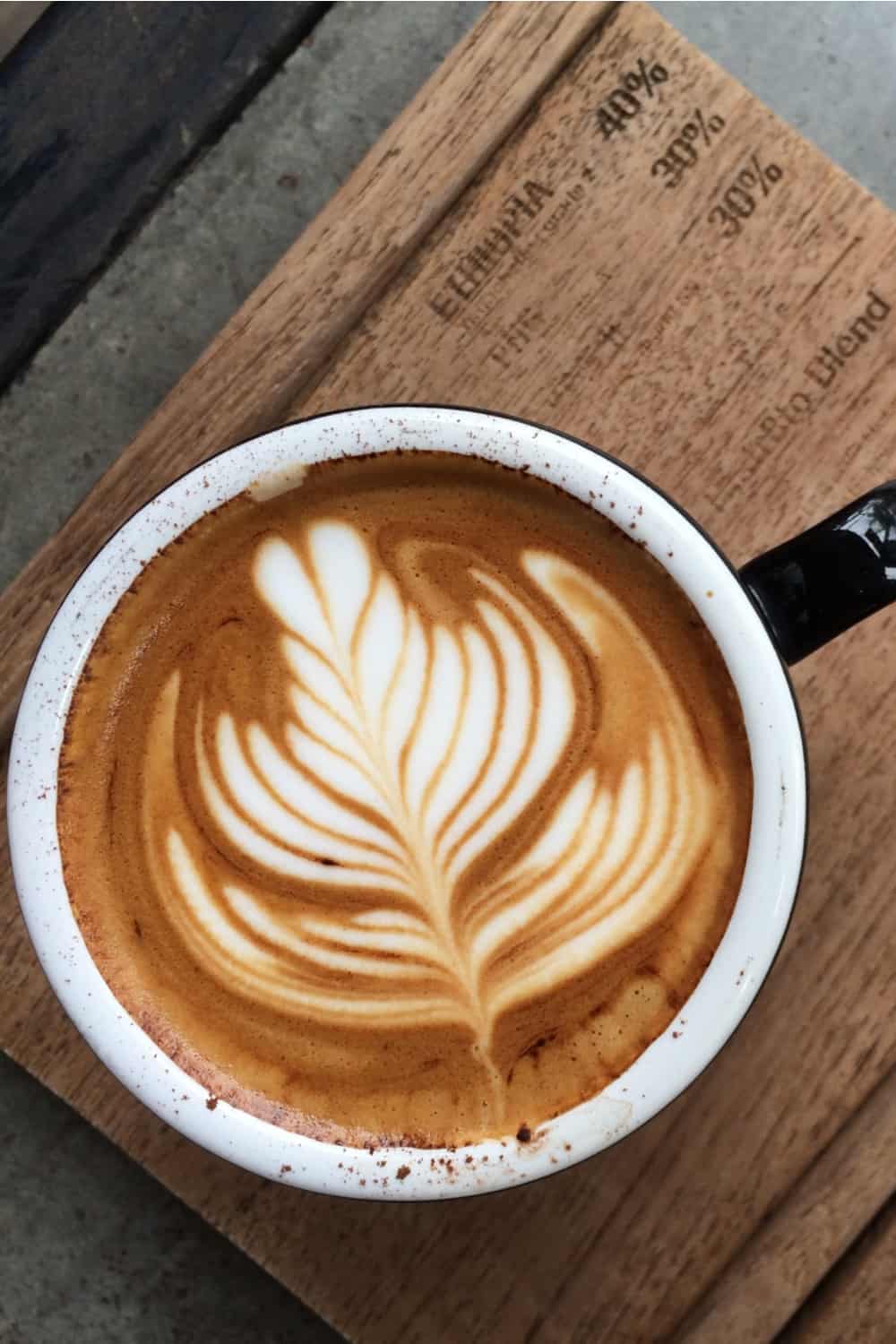
As you might expect, the latte has a longer history than the flat white.
It’s believed to have been invented in the US in the 1950s. The Caffe Mediterraneum in Berkeley, California, lays claim to its creation. The story goes that one of the café owners, Lino Meiorin, adapted the latte from a traditional Italian cappuccino.
Lino, who was himself Italian, saw that many customers found the cappuccino too strong. He’d therefore instruct the barista to add more “latte” – milk, in Italian – to the cup. After a while, his variation became so popular that he added it to the menu as a new drink. The caffe latte was born (1).
At first, the latte was served in a bowl. That was soon replaced with a pint glass, and later with the wide-rimmed cup we’re familiar with today. It grew in popularity in the 1980s, thanks to Seattle’s coffee houses, and today it’s one of America’s favorite coffees (2).
It wasn’t until around 30 years later that the flat white came onto the scene. The question of who invented it is the subject of heated debate. There are three contenders for the honor: Australian Alan Preston and two New Zealanders, Derek Townsend and Fraser McInnes (3).
Preston claims that white coffees served “flat” were popular in Queensland in the 1960s and ’70s. When he moved to Sydney, he says, he opened his own coffee house and served the flat white there from 1985.
Townsend claims to have served the first flat white in his café in Auckland a year later. He admits to having taken the name – though not the recipe – from a café in Melbourne, Australia.
Finally, McInnes says that he invented the coffee by accident in 1989 in Wellington. His story was that the milk in the cappuccino he was making was low-fat and hadn’t created much foam. When he presented it to the customer, he apologized for it being a “flat white” (4).
When Starbucks added the flat white to its American coffee menu in 2015, the accompanying note said it had originated in Australia. You can imagine the furor that followed!
Flat white vs latte: Size matters
If you look at a flat white and a latte next to each other there’s one difference you’ll notice straight away – the size.
Traditionally a flat white is served in a 5 to 6-ounce cup. That makes it smaller than a latte (although much bigger than an espresso). In some larger coffee chains, the size is increased to 10 ounces – but beware. The difference is almost always made up with milk, which dilutes the flavor.
A latte, on the other hand, is typically prepared in an 8-ounce cup.
What about the coffee content?
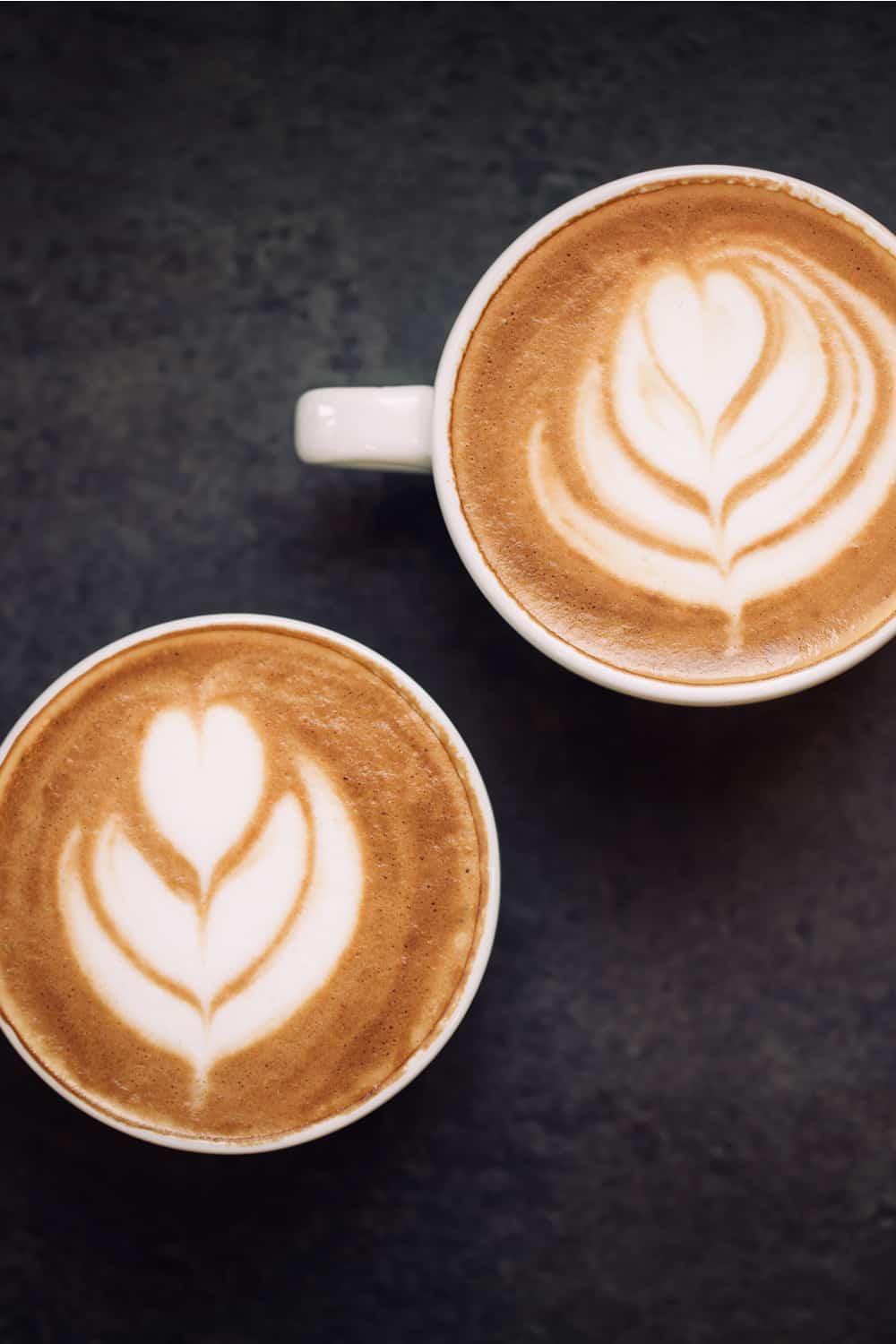
For once, the amount of espresso in the drink doesn’t make any difference. You can have either a single or double espresso shot in a latte or a flat white. Double shots are more commonly used in both, however, to create a good balance between the coffee and the creaminess of the added milk.
That’s not to say that individual coffee houses won’t use different methods. Some baristas use a ristretto for their flat whites, i.e. an espresso prepared with half the usual amount of water. Using an espresso in their lattes distinguishes more strongly between the two drinks (5).
Starbucks serves their version of a flat white with a double shot of ristretto to balance out the milk in its supersized 12-ounce drink. Those in the know, however, can go off-menu and order a “short flat white” as an 8-ounce serving (6).
The difference is in the milk
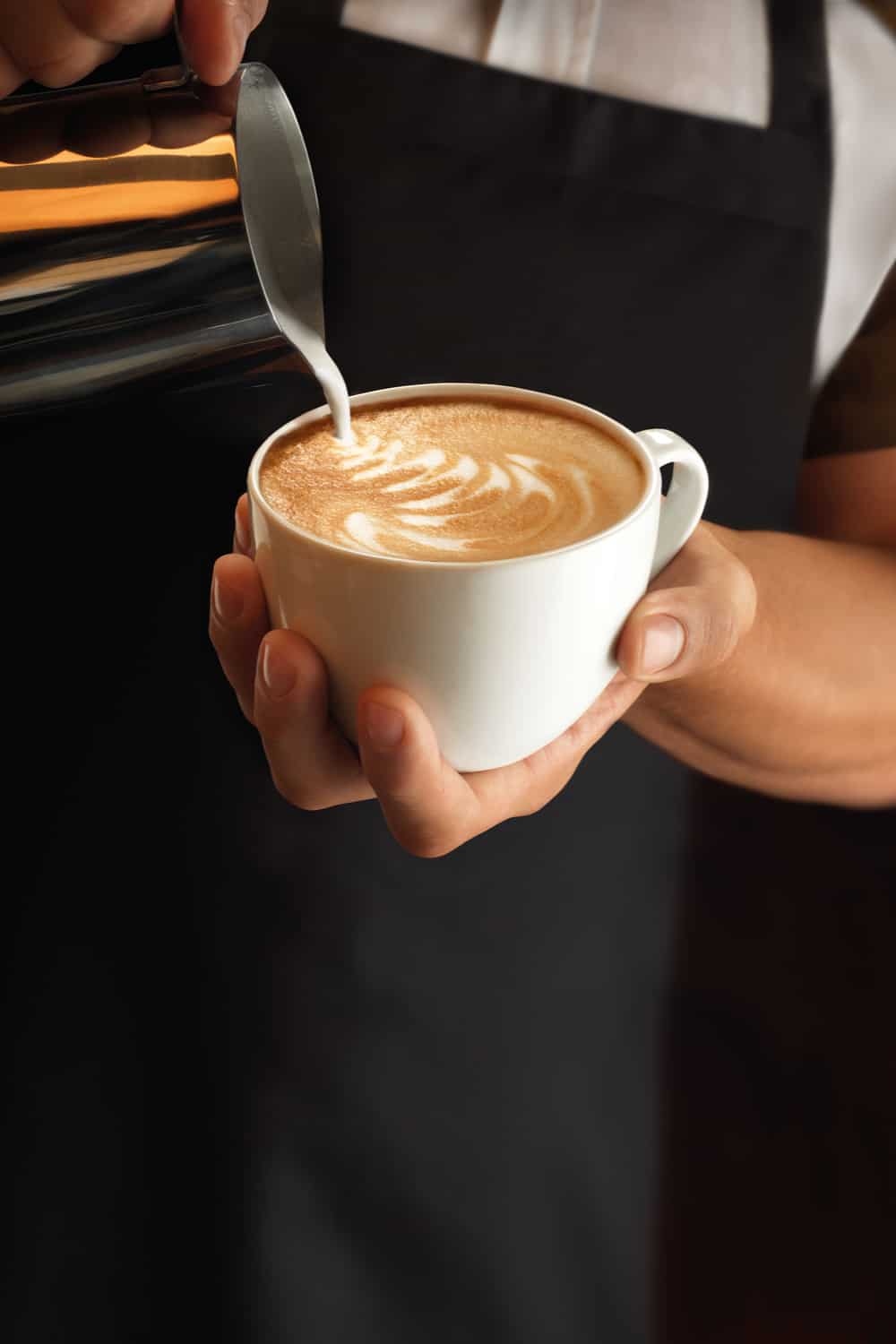
The main thing that makes the flat white experience different from a latte is the way the milk is added.
When you heat up milk, whether on the stove or with a steam wand, you’ll get three different elements. These are the liquid milk, micro-foam and froth.
At the bottom is the hot milk in its liquid form. As it heats up it remains smooth and silky, and becomes slightly thicker than it was when it was cold.
On top of the liquid milk is what’s known as micro-foam. These are small bubbles that still have a fairly liquid consistency. The uppermost layer is the froth – big bubbles that are stiffer than micro-foam.
Creating the foam is an important part of the barista’s art. The process of heating and frothing the milk is known as “stretching”. A good barista will spend a lot of time learning how to get the technique just right.
The milk for a flat white is frothed, folded, and swirled to blend together the bubbles and the liquid milk. This creates a microfoam mix with a velvety consistency throughout the whole drink.
In a latte, on the other hand, the foam remains at the top of the drink with a smaller layer of micro-foam and the liquid milk beneath it. That’s why lattes are often served in glasses rather than cups, allowing you to see the different layers.
In this YouTube video, Todd from wholelattelove.com demonstrates the art of frothing and pouring milk for a range of espresso-based drinks.
Pouring for perfection
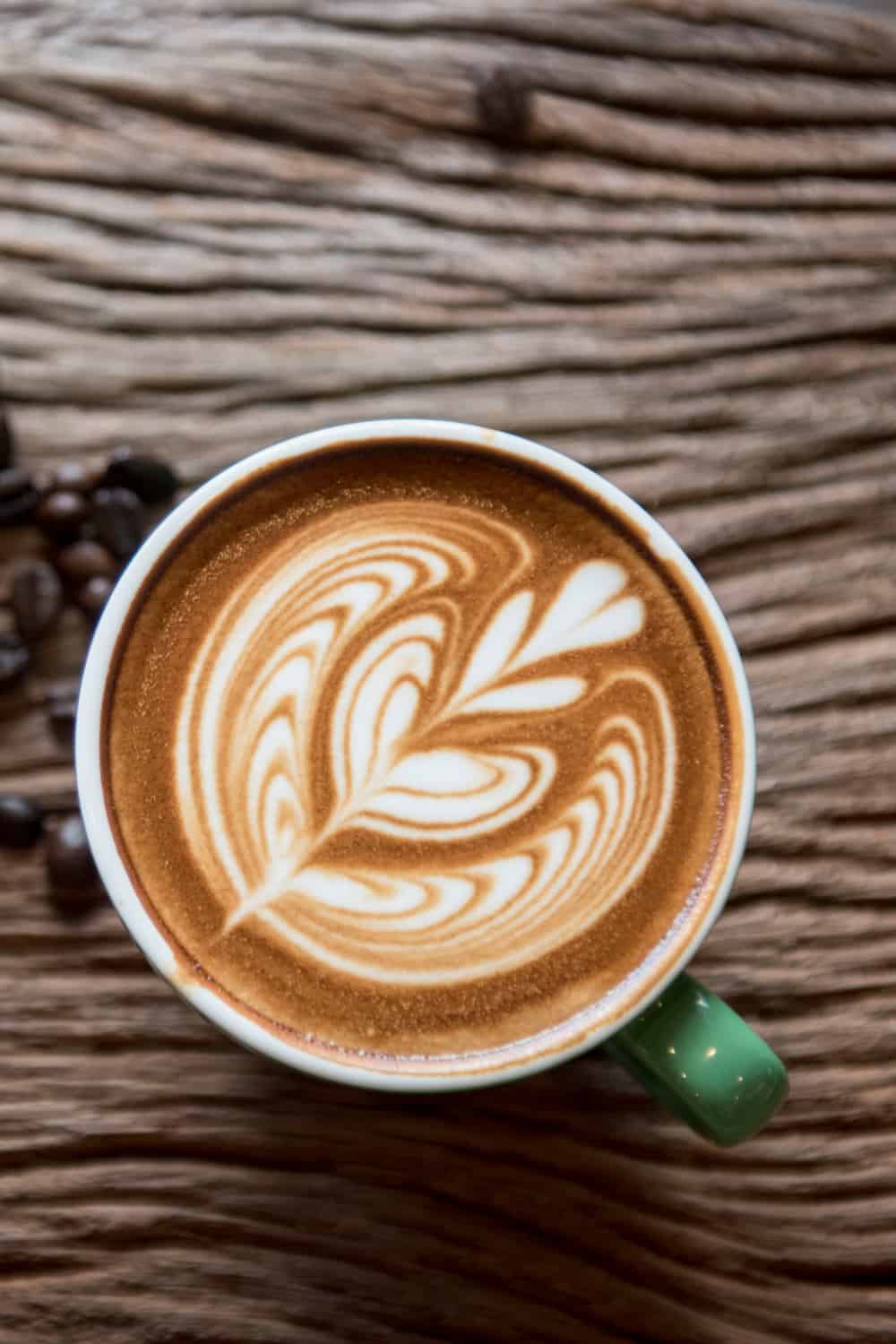
It isn’t just heating and stretching the milk that is important to get the right results. If the barista pours the milk incorrectly into the cup or glass, he or she can undo all that good work by damaging the foam.
To prepare for pouring a flat white, the barista will swirl the milk smoothly inside the pitcher, mixing the milk with the micro-foam. The ideal texture should be similar to gloss paint (7).
He or she may also give the pitcher a sharp tap on the counter to burst any large bubbles remaining on the surface of the milk. However, this shouldn’t be necessary if the milk has been swirled well and smoothly.
The most experienced baristas will be able to get the perfect foam for any drink simply by adjusting the speed and angle of the pour. This is a technique known as “free pouring”.
For the rest of us, the flat white is the easiest option to pour. It should be poured as soon as possible after stretching is complete to avoid the milk separating. As long as the micro-foam and milk have been properly mixed, it’s just a case of pouring the liquid from the pitcher into the cup.
For a latte, the simplest option is to pour the milk from the pitcher to the cup, using a spoon to hold back the froth. Then add a thin layer of foam on top of the cup.
These finishing touches create the distinctive appearances of the two drinks. The flat white – as its name suggests – has a smooth, glossy surface. The latte, on the other hand, has a thin layer of froth on top.
Pouring the milk slowly is key to getting the crema to rise to the top of the cup. Which brings us to the next important distinction between a flat white and a latte…
Crema
The crema is the golden-brown foam that sits on top of a shot of espresso. It has a sweeter taste than the liquid coffee and a silky texture.
Because a latte is topped in a thin layer of foam, the crema is usually lost underneath it. In a well-made flat white, on the other hand, the crema will merge with the textured milk. The result will be a smooth golden surface to the drink.
Skilled baristas can make the top of either a latte or a flat white look like a work of art. This YouTube video shows some great examples.
Flavor and strength
We’ve talked about texture and appearance – but what about the difference in the taste?
The different approaches to the preparation and pouring of a flat white and latte create two different drinking experiences. As a flat white also has a higher coffee to milk ratio than a latte, it has a stronger taste.
The results? A latte essentially tastes like a milky coffee, while a flat white is more like a creamy espresso.
The price of fashion
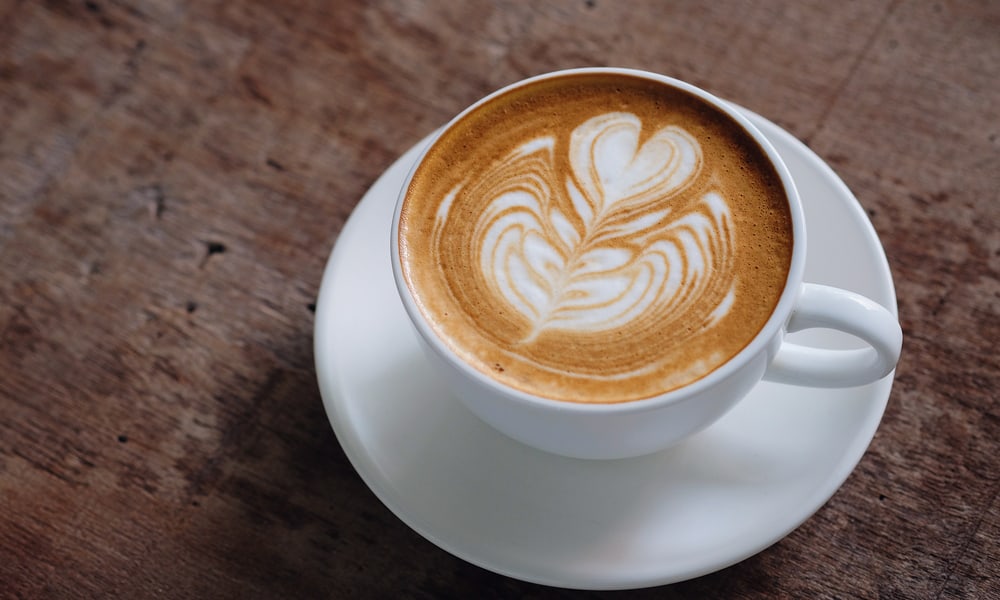
A flat white is often a slightly more expensive option in coffee shops than a latte. In the UK, the price difference has caused quite a stir, with the television program Supershoppers claiming that customers were being ripped off.
Both drinks contain the same amount of coffee, and a flat white has less milk. Surely that means that, if anything, it’s the latte that should be more expensive?
Part of the reason for the flat white’s higher price tag is its reign as the king of coffee cool. Simply put, customers are prepared to pay more for the new kid on the coffee block.
But others contend that there’s a good reason to pay a premium. The art of producing the smooth micro-foam that characterizes the flat white takes skill. And if you want a pretty flower on top of your coffee, that’s another trick for the barista to learn.
Both those mean that for the perfect flat white, baristas will need training and time to master new techniques. It’s only reasonable, the coffee shops argue, that this is reflected in the price (8).
In reality, despite the controversy, the price difference isn’t huge. In the UK, a flat white in Starbucks costs 20 pence – about 28 cents – more than a tall latte.
Calorie: flat white vs latte
For those watching their waistlines, the calorie content of the drinks will be of interest. Is choosing a latte or a flat white the more diet-friendly option?
The bad news is that since both drinks are made with milk they contain fat. Limiting the number of cups you drink is a good idea if you’re watching your weight. Swapping from full- or half-fat to skimmed milk will also make a big difference.
Lattes and flat whites are almost the same in their proportions of coffee and milk. That means that for the same size serving, there’s virtually no difference in their calorie and fat contents.
A 7.75-ounce latte made with full-fat milk contains 123 calories and 4.4 grams of saturated fat. The same-sized flat white made the same way also has 123 calories but 4.6 grams of saturated fat.
The small difference is the result of the foam on top of the latte. That includes more air, so there’s slightly less fat than in the flat white. Bear in mind too, those flat whites are usually served in smaller sizes (9).
As ever, though, beware of differences to the norm. In Starbucks, ordering a tall latte will get you a 12-ounce drink with 150 calories.
Order a grande flat white in the same chain and you’ll receive a whopping 16-ounce drink with 220 calories.
Of course, if you want to get a lower-calorie, you can try to invest a Nespresso Machine, and make the low-calorie latte or flat white at home.
Conclusion
So there you have it. From the history to the ingredients and flavor, to the impact on your pocket and your waistline – you now have all the information you need to choose between a flat white and a latte.
Of course, the best way to make a decision is to go down to your local coffee shop and sample both drinks! You might even want to take a blind taste test to make sure your preference is based on flavor alone. But if you want to brew at home, A home latte machine could help you speed up.
If you have any questions, please comment and let us know.